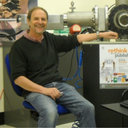Sirolimus (rapamycin) for the treatment of steroid-refractory acute graft-versus-host disease.
Kata kunci
Abstrak
BACKGROUND
In a pilot trial we evaluated the toxicity and efficacy of sirolimus (rapamycin) as second-line therapy for the treatment of acute graft-versus-host disease (GVHD) in 21 patients (1-46 years of age) after allogeneic hematopoietic stem cell transplantation (HSCT).
METHODS
All patients were treated with methylprednisolone at 2 mg/kg/day, but failed to respond satisfactorily. Sirolimus was started 19-78 (median 37) days after HSCT when 10 patients had grade III and 11 had grade IV GVHD. The first four patients received a loading dose (15 mg/m2) of oral sirolimus on day 1 followed by 5 mg/m2/day for 13 days. The next 17 patients received either 5 (n=7) or 4 (n=10) mg/m2/day for 14 days without a loading dose. Eleven patients completed the 14-day sirolimus course. Five patients were treated for 9-13 days, two for 6 days, and three for 1-3 days.
RESULTS
Sirolimus was discontinued early in 10 patients because of lack of improvement in GVHD (n=5), myelosuppression (n=2), seizure (n=2), and attending physician preference (n=1). The most common and significant adverse events were thrombocytopenia (n=7) and neutropenia (n=4). Other side effects included increased blood triglycerides (n=8) and cholesterol (n=3). Five patients had evidence of a hemolytic uremic syndrome concurrently with or after sirolimus treatment. Eighteen of the 21 patients received 6 or more doses of sirolimus and 12 responded, 5 with complete and 7 with partial responses. Six of the 12 responders (28% of all patients enrolled) and 1 nonresponder are currently alive at 400-907 days after HSCT, 3 with chronic GVHD. Fourteen of the 21 patients (66%) died 40-263 days after transplant.
CONCLUSIONS
These data suggest that sirolimus has activity in the treatment of steroid-refractory acute GVHD. However, there was considerable toxicity and further dose optimization studies seem warranted.


